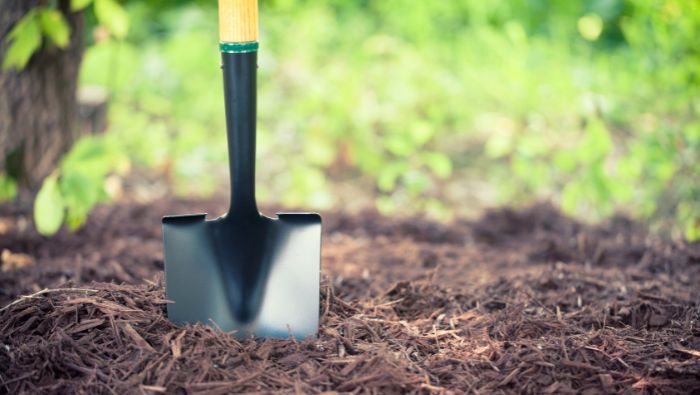Cut Gardening Costs With Sheet Composting

Across the country, victory gardens, once popular during World War II, have been springing up as consumers look to trim their budgets by growing their own produce. But did you know that there are ways to cut down your expenses, even in the garden?
With a little bit of foresight and organization, you can make your gardening effortless while at the same time eliminating the need for expensive tools such as tillers, sprinklers and electric timers. How? Through sheet composting.
What Is Sheet Composting?
More popularly known as Lasagna Gardening (thanks to writer and gardener Patricia Lanza), sheet composting involves layering mulch and compost over your garden rather than tilling the soil. As the layers decompose, they enrich the soil.
Best of all, this is a no-till garden, as plants are planted directly into the layers of the garden.
Sign Up for Savings
Subscribe to get money-saving content by email that can help you stretch your dollars further.
Twice each week, you'll receive articles and tips that can help you free up and keep more of your hard-earned money, even on the tightest of budgets.
We respect your privacy. Unsubscribe at any time.
A Sheet Composting How-To
To begin the process, mark out the area in which you want your new bed to sit. Then, trample or cut down any vegetation in that area. Over the top of this, place a layer of either newspaper or cardboard to act as a barrier against weeds or grass. Then, add a layer of peat moss or manure.
Next come layers of organic materials such as grass clippings, dead leaves and kitchen scraps. Remember that the microorganisms that break down these materials need both nitrogen and carbon-rich materials, so try to add your layers by alternating between the carbon-rich “brown” layers like leaves and straw and the nitrogen-rich “green” layers, which include grass clippings and kitchen scraps.
Some examples of the materials that you might use include weeds, grass clippings, leaves, manure, hay, straw, fruit and vegetable scraps, tea and coffee grounds, manure, compost, sawdust, peat moss, shredded newspaper or junk mail, pine needles, bark chips, seaweed and coconut husk.
Materials that should not be put into the sheet compost layers include weeds that have gone to seed, animal fats or feces.
If you’re new to composting, you can find out more about it here.
The Best Time To Sheet Compost
The best time to sheet compost is in the fall to give the layers time to decompose and to kill off the vegetation underneath the paper layer. However, if you start your garden in the spring, you can still plant it. Simply pull back your layers of compost and plant the plants right in it.
Cutting your mulch, particularly dead leaves or plant stalks, into smaller, more uniform sizes will not only speed up the decomposition time but will also make your garden look better.
Maintaining the sheet-composted garden is also simple. Just add more layers of mulch as time goes on.
Benefits of Sheet Composting
Best of all, sheet composting saves your budget in many ways:
- You save the expenses of purchasing and maintaining a tiller as well as the cost of gas.
- Your water bill is trimmed because the layers of mulch hold more water than a tilled earth garden.
- For those who pay for trash haul-away, sheet composting reduces the volume of trash by giving you a place to put your kitchen scraps and grass clippings.
- There is no need to purchase expensive fertilizers, as the sheet composting materials are already very nutrient-rich.
- Many sheet-composting aficionados swear that produce grown in a sheet-composted bed is more abundant and healthy. In fact, you may have so much produce that you’ll be tempted to either give it away or sell it.
- It’s an inexpensive way to fill containers for your container garden. Simply layer the compost directly in a container the way you would in the ground.
Finding Cheap and Free Composting Materials
Many of the mulch items used for composting are either free or can be found for little or no cost.
For example, many supermarkets will give you the produce that they would ordinarily throw away if you ask them for it. For another source for compost layers, large chain coffeehouses like Starbucks often save their coffee grounds for gardeners. And neighbors are often glad to give you their grass clippings and leaves if you will simply haul them away. But, beware! If your neighbors know why you want their grass clippings, they may want some of your produce in exchange.
Reviewed September 2023
Sign Up for Savings
Subscribe to get money-saving content by email that can help you stretch your dollars further.
Twice each week, you'll receive articles and tips that can help you free up and keep more of your hard-earned money, even on the tightest of budgets.
We respect your privacy. Unsubscribe at any time.
Wouldn't you like to be a Stretcher too?
Subscribe to get our money-saving content twice per week by email and start living better for less.
We respect your privacy. Unsubscribe at any time.
Popular Articles
- 7 Habits of Highly Frugal People
- 5 Simple Budget Cuts That Can Save $200 a Month
- How to Track Down Unclaimed Funds Owed You
- 32 Ways to Save Money on Your Utility Bills
- Do You Need Credit Life Insurance When Buying a New Car?
- How to Maximize Profits When Selling Online
- Staying Motivated to Continue Digging Yourself Out of Debt
On After50Finances.com
- 9 Things You Need to Do Before You Retire
- You Didn’t Save Enough for Retirement and You’re 55+
- When Empty Nesters Reorganize and Declutter Their Home
- Reinventing Your Career in Your 50s or 60s
- What Mature Homeowners Should Know about Reverse Mortgages
- 2 Reasons to Collect Social Security Benefits As Soon As Possible

